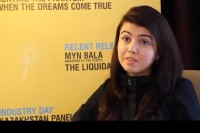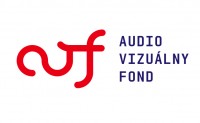FNE spoke to producer Anna Katchko in Tallinn about the Baltic Event’s new B’EST programme and the new opportunities that are opening up for European producers to cooperate with Kazakhstan.
FNE spoke to producer Anna Katchko in Tallinn about the Baltic Event’s new B’EST programme and the new opportunities that are opening up for European producers to cooperate with Kazakhstan.
On the occasion of its meeting held in Valletta/Malta following the 25th European Film Awards the board of the European Film Academy issued the following declaration:
Slovak Audiovisual Fund (www.avf.sk) announced the projects supported at the fourth round of 2012. The decision was approved by Martin Šmatlák, the Director of the Slovak Audiovisual Fund on 19 November 2012. See the full list of supported projects.
PRAGUE: The simultaneous theatrical and VOD release of Jan Hrebejk's Waste, City and Death, an adaptation of a Rainer Werner Fassbinder script and stage play in Prague has brought in limited audiences over the first two weekends.
PRAGUE: Leading Czech commercial broadcaster TV Nova (tv.nova.cz) has asked the state for permission to launch a new channel, which it would call Smichov, described as offering content of a "fun character."
TBILISI: The 13th edition of the Georgia's Tbilisi International Film Festival (www.tbilisifilmfestival.ge) kicked off last night (3 December 2012) with a screening of Istvan Szabo’s The Door, with the Oscar winning Hungarian director in attendance.
Prague, December 3, 2012 The animation film Alois Nebeldirectedby first time director Tomas Lunak became the winnerof the award for the best animation film of 2012 at the European Film Awards ceremony, taking place 1 December at Malta.
The more than 2,700 members of the European Film Academy - filmmakers from across Europe - have voted for this year’s European Film Awards. At the awards ceremony in Malta the following awards were presented:

























